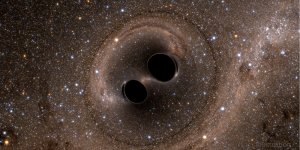| News / Science News |
Song of the red rock arches
It starts out as a rumble, like something heard underwater. It rises and falls in waves that pass one after another. But it couldn't be farther from the sea.

Corona Arch in Utah. Image credit: Alison Starr/University of Utah
Seismic vibrations that are almost imperceptible to human ears ripple through the rocks. Geoscientist Jeff Moore of the University of Utah uses recordings of the vibrations to study the arches' structural stability.
"These rock movements are happening every second of every day, but are too small for us to see or feel," Moore said. "Hearing the natural hum of the arches gives them a 'voice' where, in effect, they convey their state of health and their responses to all manner of forces."
Seismic sources as close as Lake Powell (on the border of Utah and Arizona) and as far away as Oklahoma caused vibrations in the bridge.
The scientist characterized how waves resonate throughout the bridge, causing small movements that, when exaggerated, look like wobbles on a plate of gelatin.
These gorgeous rock arches appear to be stationary, but they're actually in constant motion in response to wind and other environmental forces.
For example, Moore's team found that a helicopter flying close to an arch in Utah's Bryce Canyon caused the arch to vibrate with an amplitude one hundred times greater than normal.
This research has important implications for the conservation and management of natural resources, especially related to natural hazards such as earthquakes as well as the impacts of human visitation. (National Science Foundation)
YOU MAY ALSO LIKE



